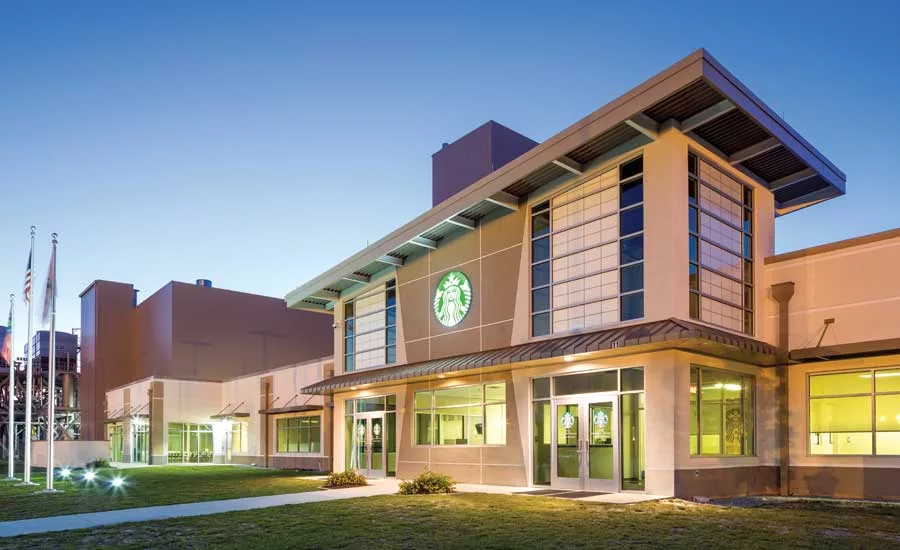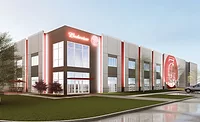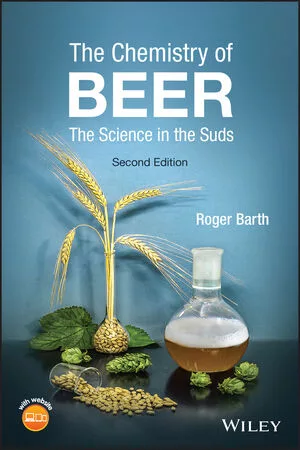New facility planning focuses on sustainability, automation
Energy efficiency drives use of alternative solutions

Stellar recently designed Starbucks Coffee Co.’s plant in Augusta, Ga., for Leadership in Energy and Environmental Design (LEED) Gold certification, Stellar’s Joe Bove says. (Photo by Robert Pepple, courtesy of Stellar)
Whether planning an expansion or a new facility, the ever-evolving beverage industry necessitates that those involved evolve with it. With trends like SKU proliferation and sustainability impacting the overall beverage industry, a slew of decisions need to be made when planning construction.
“Ensuring your new facility aligns with your company’s strategic plan is the most important factor during the planning phase,” says Joe Bove, vice president of design at Stellar, Jacksonville, Fla. “You need to ensure a new facility is the best decision for your business and bottom line before embarking on the project.”
St. Louis-based HDA Architects’ President Jack Holleran says that the when companies plan a new facility, they also should be thinking about future expansion. “The only thing constant is change — plan enough site and building to allow changes,” he says.
Think green
Change is a key element when developing an energy-efficient facility, experts note. Holleran says that the use of HVAC and electrical systems for energy conservation, solar panels, ice storage and other non-traditional systems, insulated concrete walls, and reflective roofing all can play a role in improving a beverage plant’s energy efficiency.
Yet, Stellar’s Bove notes that some are hesitant about the initial investment and return on investment (ROI) when it comes to sustainable facility solutions. “At Stellar, we’re noticing an increasing need to balance low front-end construction budgets with a high demand to meet high sustainable-energy demands,” Bove explains. “It can be difficult for an owner to justify the higher upfront costs and expenses associated with energy-efficient solutions, such as equipment and building materials. Providing and presenting energy-efficient options that offer the best ROI is becoming a necessity.”
According to Bove, the company makes several recommendations to beverage companies when planning a facility that are based on sustainability and ROI, including proper insulation, the use of variable-frequency drives, LED lighting and building automation systems.
It’s also important to think outside of the box when it comes to water conservation, he says. “Beverage plants use massive quantities of water for everything from processing to sanitation,” Bove explains. “It’s important to develop some sort of system for conserving water.”
Stellar recently designed Seattle-based Starbucks Coffee Co.’s plant in Augusta, Ga., for Leadership in Energy and Environmental Design (LEED) Gold certification, according to Bove. “One sustainable solution we employed was installing multiple cooling mediums within the plant (i.e., ammonia, ammonia to glycol, water tower) as opposed to just one,” he says. “The facility uses tower water for its condensing process, using air rather than ammonia compressors to cool water. This achieves greater energy efficiency and improves worker safety by reducing the amount of ammonia throughout the facility.”
Lloyd Snyder, senior vice president at Woodward & Curran, Portland, Maine, also highlights the importance of water management in beverage facilities. “Water, wastewater and power are important factors to consider,” he says. “These are infrastructure costs that can add significant cost to the construction of a new facility. To bring these outside services to your new facility, significant planning and negotiations are key.”
He adds: “A facility’s infrastructure needs to be built with planning for water reuse and alternative energy. Infrastructure to segregate wastewater streams can be beneficial to economical water reuse treatment processes.”
Stay flexible
Working in a continually evolving industry, beverage facilities must be flexible, according to facility design experts. SKU proliferation, automation and flexibility are just a few considerations among many to be considered during the designing phase.
“As SKUs grow, beverage facilities have had to become more flexible in their processes,” Stellar’s Bove says. “It is important for a plant to have the capacity to make recipe changes, alter batch sizes and have the ability to expand in the future. The flexibility cuts down on waste from unneeded product.
“With the expansion of SKUs, plants need to be able to fine-tune flavors,” he continues. “Automation allows facilities to control the processes that go into making a product, so changing flavors is easier than ever. It took over a year for the Starbucks beverage plant to perfect their automation process, using equipment from three different providers. Their design allows products to easily change process paths, so they don’t have to go in chronological order through the plant.”
HDA’s Holleran notes that the beer market not only needs to anticipate SKU proliferation but shifts in consumer preferences. “For 10-year warehouse storage capacity, the SKU growth of kegs, crafts and domestic beers need to be calculated for,” he says.
Woodward & Curran’s Snyder notes that the proliferation of SKUs continues to drive the use of automation, robotics and radio frequency identification (RFID) technology. “People are using RFID technology to track a high number of SKUs through the supply chain,” he says. “Robotics costs are coming down and making projects more viable to reduce manpower costs and produce a more consistent product.”
Looking for a reprint of this article?
From high-res PDFs to custom plaques, order your copy today!






